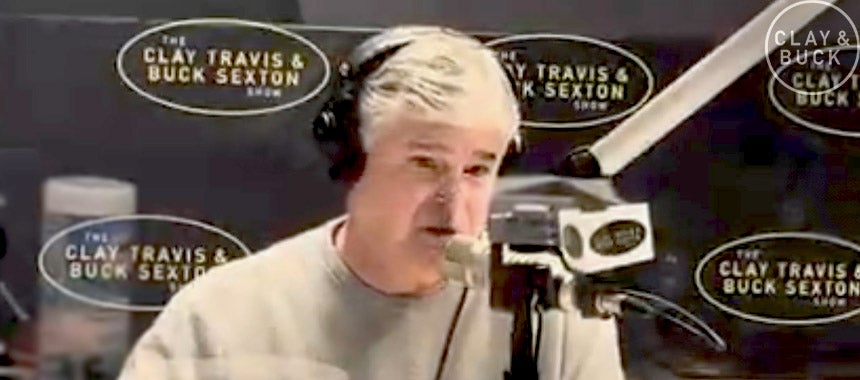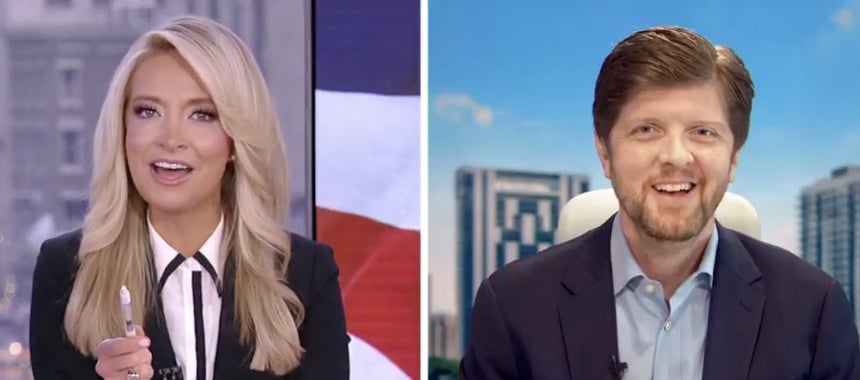Rafael Mangual’s Solution to NYC Crime
27 Jul 2022
CLAY: We are joined now by Rafael Mangual. He is a senior fellow, head of research for the Policing and Public Safety Initiative at the Manhattan Institute, contributing editor of City Journal, also the author of Criminal (In)Justice. Rafael, you’re in-studio with us here in New York. Appreciate you being here. Buck and I have been talking a lot about so many of these viral New York City crimes that have been caught on video, that have spread.
Most recently — I’m sure you’ve seen it — a 16-year-old kid fighting with a police officer in the subway. It’s been everywhere, that video. What’s going on in New York City? Based on the research and data that you have, are you optimistic in any way that things are getting better? Are we getting worse from here? How did we get to this place where crime is an omnipresent fear for a huge majority of people in the country right now?
 MANGUAL: Well, I’m not optimistic at all. I do think things are gonna get worse for quite a bit of time. And part of that is ’cause we’ve made so many serious structural changes to our criminal justice system, to our policing system over the last several years — everything from bail reform, to discovery reform, to the Right to Know Act, to the real discouragement of proactive policing tactics, stop-and-frisk, what have you — that our criminal justice system no longer has an infrastructure in place to kind of keep up with the pace of crime as it’s gone up.
MANGUAL: Well, I’m not optimistic at all. I do think things are gonna get worse for quite a bit of time. And part of that is ’cause we’ve made so many serious structural changes to our criminal justice system, to our policing system over the last several years — everything from bail reform, to discovery reform, to the Right to Know Act, to the real discouragement of proactive policing tactics, stop-and-frisk, what have you — that our criminal justice system no longer has an infrastructure in place to kind of keep up with the pace of crime as it’s gone up.
And so, I think we’ve been caught off guard as a city, and until we make the decision to kind of reestablish those pieces of that puzzle that need to kind of work in concert with one another, we’re gonna find things are gonna get worse for a while. The case you mentioned, the 16-year-old fighting police officers, I think one of the most interesting things about that case is that that kid had previous charges that involved armed robbery, firearm possession. This is someone who arguably probably shouldn’t have been on the street at that time, and what we’re seeing a lot more of are these really heinous offenses committed by people who have 15, 20 prior arrests.
BUCK: Yeah, it’s clear that there’s no fear of the justice system, right?
MANGUAL: Yeah!
BUCK: If you’ve already been caught, we’re not even talking about people that get away with things. And one part, Clay, of the analysis of the Baltimore crime situation that I think didn’t get nearly enough attention is that they’re solving one-in-three murders?
CLAY: A tiny percentage.
So great to see that my new book, CRIMINAL (IN)JUSTICE, was featured in today’s @MailOnline: https://t.co/IGXB7fiJIp
If you haven’t already, make sure you grab yourself a copy! https://t.co/N3YgQjut3a
— Rafael A. Mangual (@Rafa_Mangual) July 27, 2022
BUCK: One-in-three murders solved means two out of three they’re not even solving. So people, even, who are caught, never mind those who are getting away with things, don’t have any fear of the criminal justice system. So, Rafael, I want to know when you dig into this and you’re looking at all the data, the numbers, and how these systems are functioning of criminal justice so poorly that they’re not keeping people safe, that the city numbers are showing New York, San Fran, L.A., Houston… We can’t name all of them.
MANGUAL: Sure.
BUCK: Those too many cities with the crime going up, 50, a hundred arrests. How does that happen? Meaning, like, where are the breakdowns in the system where some guy, they go, “Oh, we found the guy who murdered the liquor store clerk yesterday. Turns out he was arrested 50 times.”
MANGUAL: Yeah.
BUCK: How did he get to arrest 50 without ever serving a long stretch, 10, 15 years in prison?
MANGUAL: Because our criminal justice system is a lot more lenient than people would have you believe, right? There’s this narrative in our country that’s kind of taken hold in the mainstream for decades now, and that narrative says that we systematically denied people second chances, right? We have Second Chance Month in the United States. When you look at the average person in prison in the United States today, they have 11 prior arrests and nearly five prior convictions. (chuckling) We are not systematically denying people second chances.
We are giving them chance after chance after chance. In cities like Chicago, the average person charged with a shooting or homicide has 12 prior arrests, 20% have more than 20 prior arrests. The reality is that our criminal justice system has always kind of used lengthy terms of incarceration as sort of a last resort. Only 40% of people who are convicted of a felony at the state level are then sentenced to a postconviction prison sentence. People think that you get caught with a little bit of weed and you’re going away for 10 years.
BUCK: This is the narrative.
MANGUAL: That’s the narrative.
 BUCK: This is the “end mass incarceration,” idea (impression) “Some guy was caught way marijuana cigarette. Now he’s serving 50 years!” That’s not what’s actually happening. How does racism as a fear — or, rather, concerns of racism within the system, how has that shaped the current criminal justice reality?
BUCK: This is the “end mass incarceration,” idea (impression) “Some guy was caught way marijuana cigarette. Now he’s serving 50 years!” That’s not what’s actually happening. How does racism as a fear — or, rather, concerns of racism within the system, how has that shaped the current criminal justice reality?
MANGUAL: Well, I think that’s put defenders of the sort of traditional institutions that constitute our law enforcement apparatus on their back foot because it’s a really hard topic to discuss, especially given the heightened tensions around that topic, and so people have really kind of leaned into the narrative that our criminal justice system is structurally racist in a bunch of different ways by highlighting these disparities of enforcement, highlighting racial disparities and arrests and police use of force and incarcerations. What often gets left out of that conversation, though, is that there’s another side to that ledger, right?
There’s criminal victimizations, and those aren’t evenly distributed either, right? We’re in New York City right now. A minimum — a minimum — of 95% of our shooting victims every single year for which we have data are either black or Hispanic, almost all of them men. It’s one of the starkest, most persistent racial disparities in our criminal justice data, and we hear almost nothing about it from the advocates, right? And so, when you start to take those realities into account, you start to realize two things: One, that we have to sort of take the disparities with a little bit of a grain of salt.
Because we have to control for the realities that that concentration of crime leads to, which is a disproportionate deployment of police resources to communities where they’re needed the most. I remember back in the nineties where the sort of critique of the NYPD was that they weren’t responsive enough to black crime, right? You’d hear it in rap music: They respond in five minutes to a 911 call in a white neighborhood, but it takes 20 minutes to get a response in a black neighborhood. This was the critique.
Well, now, the criminal justice system has become more responsive to crime that has concentrated in low-income minority communities, and that means that we have to accept that the interactions police have are gonna reflect that reality, that the number of people arrested for certain crimes are gonna reflect that reality. And if you’re uncomfortable with those disparities and the enforcement statistics, I ask people, “Why would you be comfortable with the disparities and the victimization statistics,” right?
 Like, we know that the homicide decline from 1990 to 2014 added a whole year of life expectancy to the average black man in the United States. It only added 0.14 years of life expectancy to the average white man. So ask people, “Why would a system that you say is designed and operated to oppress low-income, minority communities produce such benefits that are unequally distributed within these communities when the system achieves its stated end, as stated by the people at the system’s helm?” Ask any police chief in America, “What do you want to achieve?” “Crime declines.” “Who’s that gonna help?” Not rich white people.
Like, we know that the homicide decline from 1990 to 2014 added a whole year of life expectancy to the average black man in the United States. It only added 0.14 years of life expectancy to the average white man. So ask people, “Why would a system that you say is designed and operated to oppress low-income, minority communities produce such benefits that are unequally distributed within these communities when the system achieves its stated end, as stated by the people at the system’s helm?” Ask any police chief in America, “What do you want to achieve?” “Crime declines.” “Who’s that gonna help?” Not rich white people.
CLAY: That is a phenomenal analysis, by the way, and an easy analogy to draw here too for, if people out there are having to fight back against the racism argument, we use on this show, “Are police sexist?” They overwhelmingly arrest men. That isn’t because they’re out there trying to arrest men. It’s because men overwhelmingly commit violent crimes and, as a result, are wildly and disproportionately represented in the people who are put behind bars for violent crime. All right. So you have a magic wand.
They come to you — we’ll use New York City as an example ’cause we’re sitting here right now — and they say, “You get to implement three policies that you believe, or a couple of policies, what should we be doing to drive down violent crime?” You’re given a magic wand; you don’t have to worry about the political attacks, everything else. What would happen that you could implement as a result to lower violent crime in your mind?
MANGUAL: One thing that people don’t mention nearly enough is that I would drastically increase the funding directed at our criminal justice system. One of the reasons we talk about issues like bail reform, et cetera, are largely a function of how long it takes a case to get from filing to disposition, which influences how long peopling stand to spend in (crosstalk).
BUCK: I just want to tell you, I have a longtime friend in the district attorney’s office in New York who said, one thing that no one focused on at all was that in response to some of these anti-police, sort of pro… I don’t know. “Pro-crime” is how you describe it, but that the “cops are too rough” groups, was that they changed the requirements for how much… Like, they essentially made the burden, paperwork and bureaucrat burden of bringing every prosecution so high that it dramatically dropped down the number of actual cases ADAs can bring, just in terms of man-hours.
MANGUAL: Right. Right.
BUCK: They just said, “We need to do so much paperwork and so much stuff that we can’t even spend the hours to bring the prosecutions we want.”
 MANGUAL: And on top of that there was no additional funding given for them to comply with that additional burden, right? We see this across the criminal justice system. You know, lots of people complain about overcrowding in prisons. Every time try to spend money on increasing our carceral capacity, what do you hear? “No new jails!” Right? Lots of people complain, want to impose new requirements on police to file all kinds of paperwork, comply with corporate monitors, et cetera. Again, no new funding added for that.
MANGUAL: And on top of that there was no additional funding given for them to comply with that additional burden, right? We see this across the criminal justice system. You know, lots of people complain about overcrowding in prisons. Every time try to spend money on increasing our carceral capacity, what do you hear? “No new jails!” Right? Lots of people complain, want to impose new requirements on police to file all kinds of paperwork, comply with corporate monitors, et cetera. Again, no new funding added for that.
The idea is, I think, is that we want to starve in beast by giving it all this additional work to do and then we’re not gonna fund that effort at all and even though we’ll get less policing, we’ll get less prosecutions, less incarceration because that’s what we really want. Fine. I wish they would be a little more open about that, but fine. But then let’s have the debate about what that means for the communities you claim to represent. Because, again, crime is not evenly distributed. In New York City 5% of streets segments see 50% of all crime: 3.5% of street segments see 50% of all violent crime.
Right? If you live on the Upper West Side of Manhattan in a nice building with a doorman, the police can reduce stops and frisk by 90%, your life is probably not gonna change. But if you live in Brownsville Brooklyn, Washington Heights, Mott Haven in the South Bronx, it’s a very, very different story, and I think we need to tell that story more. So, one thing is additional funding. There are a couple of… The discovery reform, the bail reform I think should certainly be reexamined. Police funding needs to go up. The recruitment and retention crisis is real. But the main thing is that we need to get all these institutions back on the same page.
We could count on in the 1990s what the police, the prosecutor, the judges, the correctional system, parole board, they were all on the same page. They all wanted to do the same thing, and that was take dangerous criminals off the streets and give communities room to breathe. Now we can’t really count on that. Oftentimes the police are working at cross-purposes with prosecutors, at cross-purposes with judges, with the judiciary, with the parole board. And so when you see somebody who’s got 50, a hundred prior arrests, what that tells you is the police are actually still doing a pretty good job of focusing their resources on the people that pose the biggest dangers, but the rest of the system is not doing its job.
BUCK: I can say that does hurt. From the cops, I know from my time with the NYPD, that hurts morale a lot.
MANGUAL: Absolutely.
BUCK: Cops really don’t like having to wrestle someone to the ground and go, “Oh, this is 50th time we’ve had to do this.”
CLAY: Same guy.
BUCK: Same guy.
 CLAY: If people love what you’re saying, Rafael — and I bet there’s a ton of people out there in our audience who do — how can they find you, what can they do to read more about your content?
CLAY: If people love what you’re saying, Rafael — and I bet there’s a ton of people out there in our audience who do — how can they find you, what can they do to read more about your content?
MANGUAL: Check out all of our work at the Policing and Public Safety Initiative at the Manhattan Institute, Manhattan-Institute.org. I’m also contributing editor at City Journal, which has been covering this issue for decades, doing an outstanding job — City-Journal.org — and my book is Criminal (In)Justice: What the Push for Decarceration and Depolicing Gets Wrong and Who It Hurts Most.
BUCK: I’m gonna buy a copy today.
MANGUAL: Yeah, yeah, sweet.
BUCK: We’re gonna have a copy here on the shelf after I read it, added to the list.
MANGUAL: Fantastic.
BUCK: Thanks so much, Rafael.
CLAY: Fantastic, man. We appreciate the time.
Recent Stories
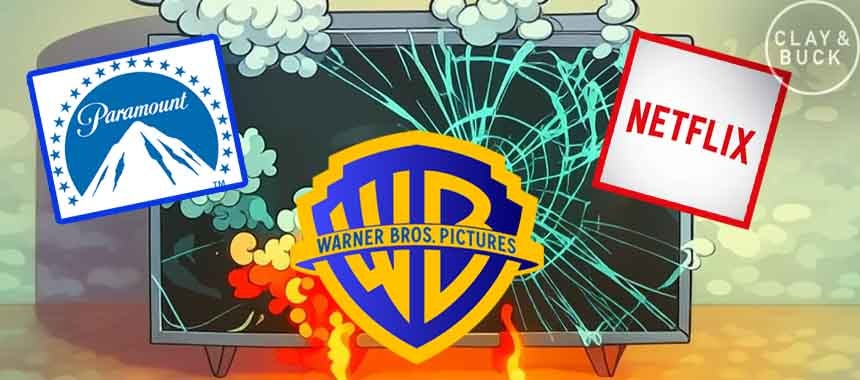
Netflix vs. Paramount Battle for Warner Bros -- Who Controls CNN & HBO Next?
A fascinating discussion on why the future of Warner Bros matters.
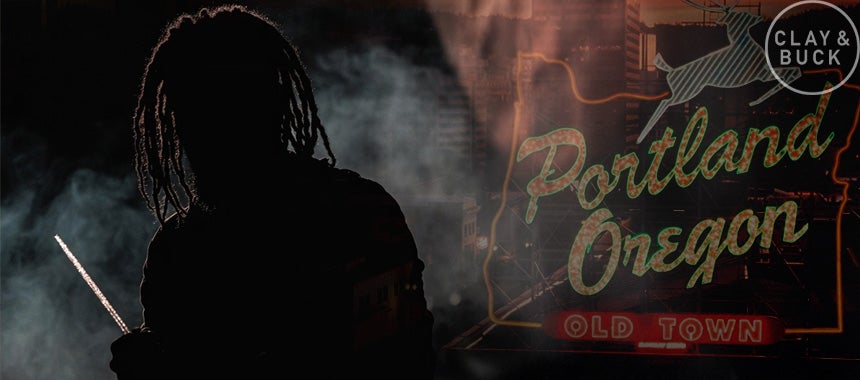
Portland Homeless Man Walks Free After Stabbing -- Jury Says Slur Was Enough
What happened to sticks and stones?
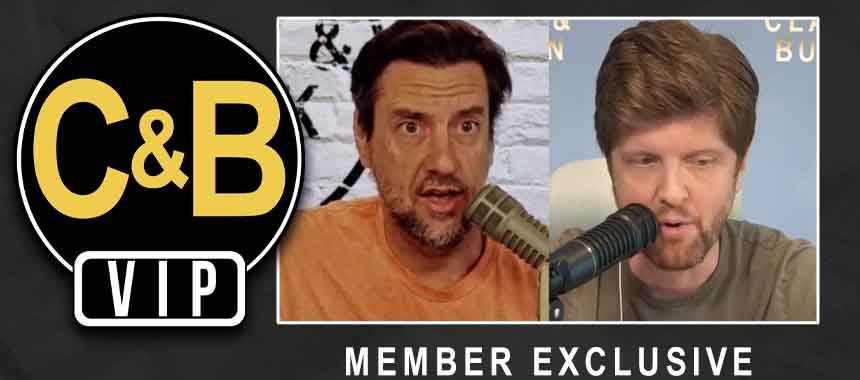
VIP Video: The Left's Narco Narrative Is Going Nowhere
Are we blowing up cocaine shipments, fentanyl shipments -- or both?




